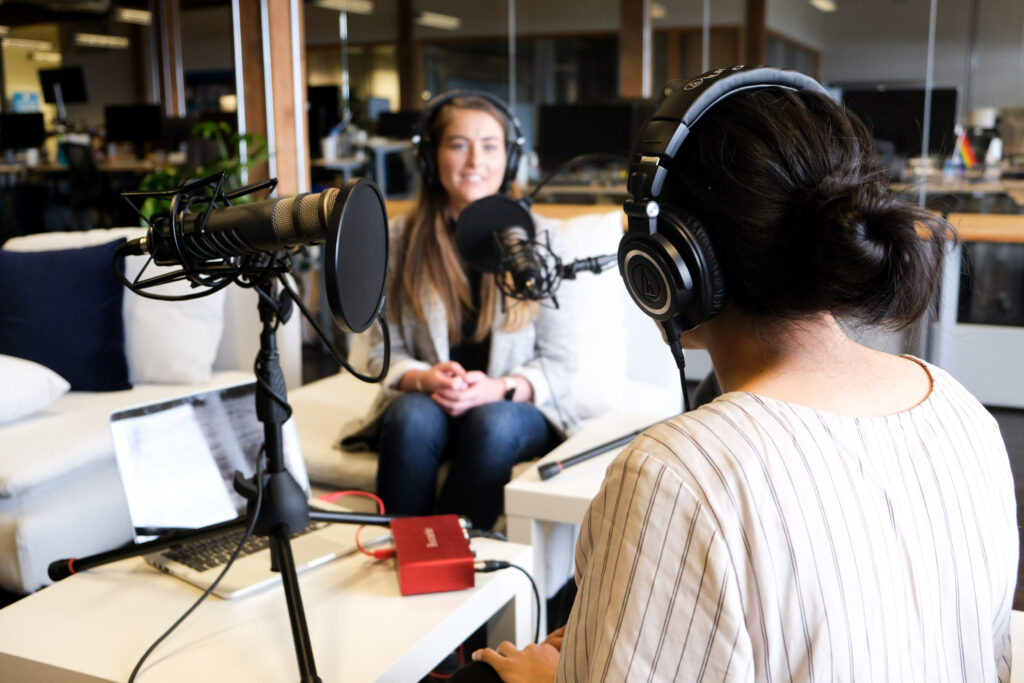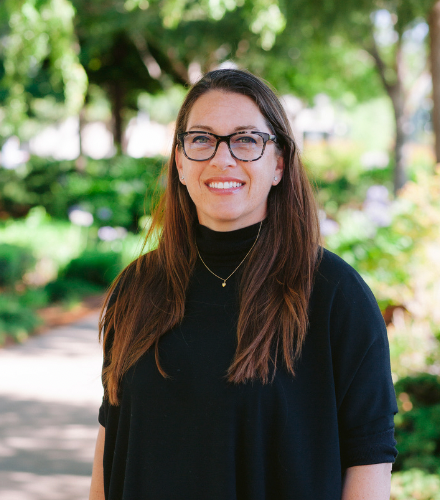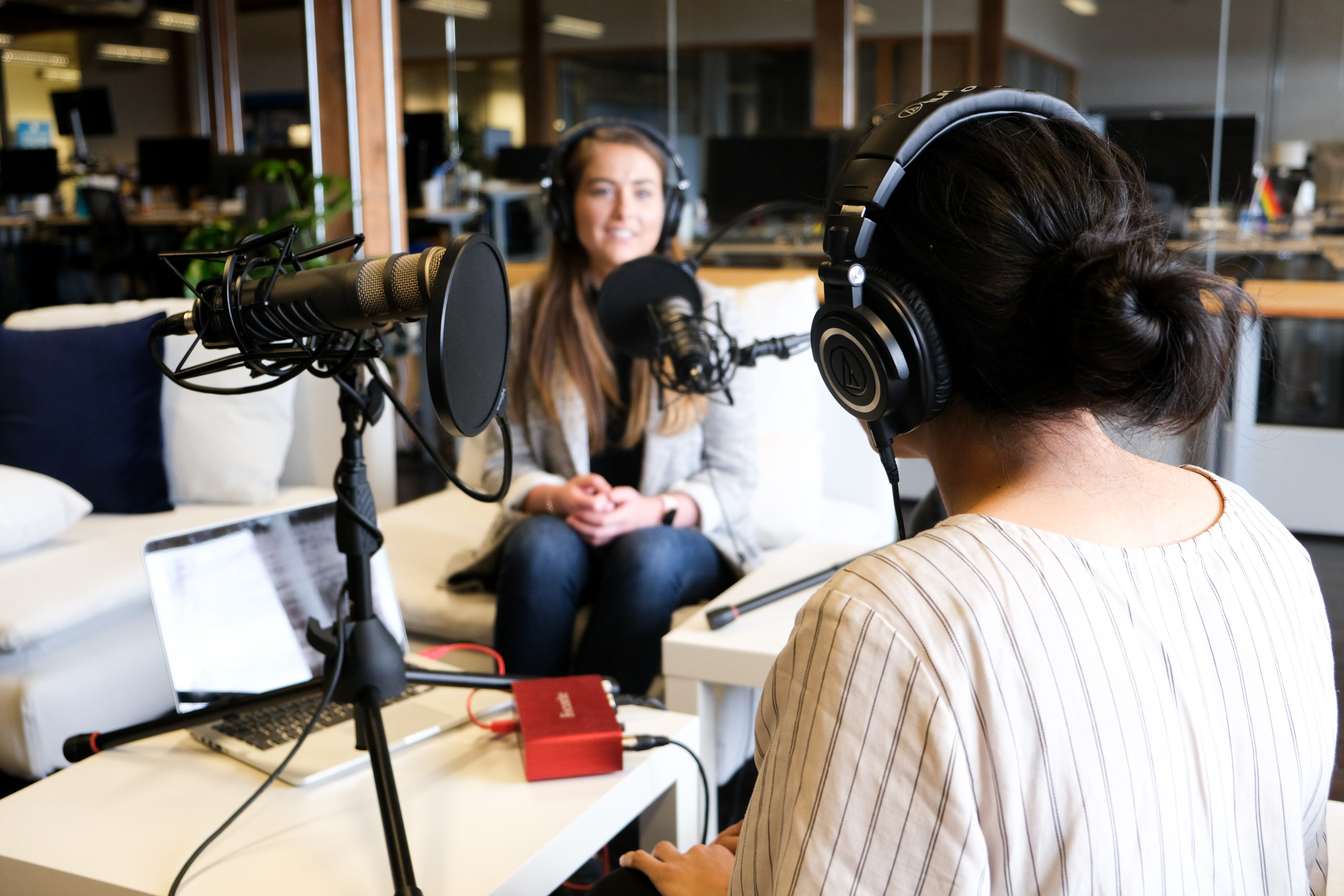Shawnna Sumaoang: Hi, and welcome to the Sales Enablement PRO podcast. I am Shawnna Sumaoang. Sales enablement is a constantly evolving space and we’re here to help professionals stay up to date on the latest trends and best practices so they can be more effective in their jobs. Today, I’m excited to have Wynne Brown join us. I would love for you to just introduce yourself, your title, and your organization.
Wynne Brown: I’d love to. My name is Wynne Brown. I’m the senior director of global enablement at Seal Software. My role encompasses sales enablement, but also all the other flavors of enablement, including internal, customer, and partner enablement. So, we brought together all of the various enablement functions under one team so that we could really reuse content and do the best we could possibly do for all of those audiences under one umbrella.
My company, Seal Software, is the global leader in AI contract analytics. All that’s very fancy to say that we use AI-powered learning to help companies understand what risk and contractual obligations there are in their contracts.
SS: Excellent. Well, I’m so glad that you were able to join us. You actually participated in the Sales Enablement Soirée recently and you defined sales enablement at your organization as ensuring that everyone knows the stories of how to provide value when they’re interacting with a customer. Why is that customer-centric approach really important for sales enablement?
WB: Customer-centricity is an approach we take on from all the different phases of our contact with a prospect, through the sales process and on into being a customer. It’s very important for us to have sales enablement focused on customer stories so that we’re always setting a very clear expectation with our prospects about the value that they would receive if they did engage with us. Those same stories are ones we want our customers to hear repeatedly from whoever it is that they’re interacting with at Seal, whether that’s somebody in professional services who’s then implementing the software after it’s been purchased all the way through to the customer success manager who is responsible for growing that value proposition over the life cycle of the customer.
So, having the whole team, no matter if you’re in sales or CX or support or customer success, having the whole team understand what those value propositions are. And that really is sales enablement to us. It really helps the customer know that they’re going to get what they’ve been promised.
SS: Absolutely. You actually mentioned in an article that you had written about the Soirée being surprised that customer-centricity was such a large focus for other practitioners. Why do you think customer-centricity is a growing trend in sales enablement?
WB: I think I was surprised because I have over 20 years of being on the revenue side of startups, gotten a little bit jaded, I think. So often, sellers are in it for themselves and that makes sense. You know, salespeople, they have a quota they have to perform, and then after the end of the quarter, that whole house of cards falls down. They have to start from zero.
So, I understand why they’re self-interested in self-motivated. Those are the salespeople who tend to do well. But as organizations, customer-centricity is absolutely a differentiator that can really predict success of that company or failure of that company. So, it was refreshing to me to know that there’s been a good balance out there beyond just my own small world, my own experiences, in bringing customer-centricity to balance against that kind of a helpful or useful greed of the seller.
I think it’s a growing trend because of that. I think that what most organizations have seen over the, you know, especially the burgeoning role of SaaS in the technology world, is that without customer satisfaction, your company will die. And so even if the motivation is that greed or that self-success or self-oriented success, it’s a wonderful required motivation or goal to also be customer-centric. Without customer-centricity, companies simply die.
SS: I couldn’t agree more. And you had mentioned that at Seal you support sales, customer, partner, and internal teams, which is quite a lot, through your sales enablement efforts. How do each of these teams, from your perspective, impact the customer journey?
WB: That’s a great question. In a lot of ways, sales and partners for us are the same impact. Whether we’re selling directly to a prospect or a partner is selling on our behalf, that part of the journey really is all about setting those expectations. Again, we want to make sure that we’re consistently telling the same value story of value proposition that will truly be delivered by our software.
When we get into our own internal and team enablement, it is really absolutely key that not only are we telling those same stories, but that we ourselves are the experts in our own software. Our software is very robust, very complex, very comprehensive. And so, to make sure that our own teams are at the cutting edge always of knowing how to make those stories come to life is essential as well.
The customer journey there through implementation is hugely impacted on making sure we are the best at what we do for ourselves. And then of course, you know, the customer enablement piece itself is where they become the expert. This, again, is why we pulled all of these enablement functions under one team. At the end of the day, our biggest wish is that our customers are as expert in using our software as we are ourselves. That runs the spectrum. So, not only do we have kind of the customer journey across all the touch points of our teams, but then our customers themselves have very different or distinct user journeys in our software.
We have many different types of users in our software. So, we’ve designed our customer enablement to really mimic how we enable our sales teams, our own partners, our own internal teams to make our customers the expert. It’s a little bit of an interesting kind of idea. We want to help our customers sell the value proposition into their organization. Seal Software works at a very large enterprise scale. We often start with a single business unit, and so we have to make sure that they know how to explain the value proposition. So, that’s not just say, the legal team that’s using Seal Software, but also the procurement team where there’s a second buying decision. So, we actually aim to empower our sales, our partners, and our customers in that full spectrum of enablement.
SS: I love that. Empowering your customers to sell on your behalf. That’s the main thing. I mean, customer advocacy is also a very big topic these days in our space.
WB: Very much so. I mean, it’s incredible how the role of the buyer has changed. I think it’s trite, right? We all know that the buyer journey now encompasses a lot of research so that you end up talking with a prospect who is much better informed than say, 10 years ago, certainly 15 years ago. But there’s also this idea of how do we then take that buyer and convert them into an advocate, not just for our good, right?
We definitely want them to say, help us sell more software, but for their own career pathing, if they become the champion of a tool like Seal Software that makes a huge impact on the business on the bottom line, that can set their career up for a real incredible watershed. It’s a turning point where they become seen more as a leader, a thought leader, somebody who’s cutting edge and knows how to really leverage great results for the business.
So, that’s also kind of one of my personal obsessions in work, is how do we make others truly successful? And when we talk about customers, it really is that delivery of making them that cutting edge thought leader.
SS: I love that. So, let’s get tactical, for just one moment. I’d love to understand, and I think the audience would too, some ways in which you have enabled your various teams to be more customer-centric in their approach.
WB: Well, one thing we do constantly is collect stories. Especially when we’re talking about enablement, when we get down to brass tacks, it really is who’s teaching who what, right? And so, for me, the way I can bring those tactics to bear is constantly collect stories, and that’s done in partnership with our customer success team and our marketing team.
And then what I can do from where I sit is pepper throughout our training materials, those stories. So, it’s not just about some pie in the sky kind of ROI that a seller promises to the buyer, the person who had the buying budget and decision-making position. But really it is about, okay, so here’s a standard user. They need to understand what Seal can do. We’re going to bring those stories in along with the actual how-to, hands-on training to bring that to life. So, that’s the way that we can make it much more a tactic within our trainings, whether it’s any of those four, right? The customer, the partner, the internal, or the sales training, we can bring it all to life by having very tangible business outcomes that we show how those happen in the software itself.
SS: I love that. If I could ask one more clarifying question, how do you actually string the customer experience together across all those various teams?
WB: That’s a great question. We really subscribe to what a lot of the customer success world out there has done, which is changed from silos, which if you can imagine visually a silo goes up vertically, right? And usually in pre-SaaS companies, so the whole history of companies, it’s always been siloed. You start with a sales team and then there’s a clean-cut hand off to whoever’s going to provide the product. Whether that’s a widget or software or what have you. And then when that product is delivered, then it somehow goes, clean-cut handoff, goodbye. Here’s your next person. It’s usually somebody in the back office who’s going to bill you for things. And when you want to sell more, it cycles back to that first silo.
What we’ve subscribed to and what we find to be the core and foundation really of our customer-centricity is turning all those silos on their sides. Now, instead of vertical bars, imagine these horizontal bars that stack up like a sandwich. Across that is the customer journey. So, wherever you might be, you’re always going to have that. If you think of that sandwich or that bite they had, that covers sales, that covers professional services that maybe is going to involve somebody who’s going to need to invoice for a certain amount of work that’s been delivered.
But the idea is that whatever that touch point is of the customer, we make sure they have whatever the right resources are with no silos in mind. Sometimes the seller needs to come back in and talk with another business group. We’re going to be very fluid to make sure that they’re talking with whoever’s the correct person.
I think that companies get into trouble when they have a very fixed mindset like, “Oh, this customer is past implementation. They can’t talk to professional services,” when the speediest answer is going to be to bring back in that technical specialist who assisted with the project implementation to answer that quick question instead of making them go to support, because that’s the silo they’re in now.
SS: I love that and I think that’s absolutely the right model to have because it’s the best experience for the customer at the end of the day.
WB: I agree.
SS: So, I have a question for you. How are you going about measuring customer-centricity and how do you apply those insights to optimize what you’re doing through sales enablement?
WB: That is the golden question that I wish somebody had an answer to as well. We definitely have one measure that we do and it becomes, it’s just a symbol. I don’t yet really have a good sense of how to measure customer-centricity, but what we do measure is customer contact. Not just phone calls, but to us, the most important customer contact is in-person visits.
So, we look at that across the sales experience. We have a very high correlation of closing our very large enterprise deals with more in-person visits. And the more likely a deal is to close. But we also have carried that ethic forward into our implementations. Professional services people, I’ll go ahead and stereotype them. They tend to be highly intelligent, somewhat introverted. They, in other words, like to sit at their desk and do their work. What we have really done is push our project managers and some of our technical specialists to show up on-site for customer implementations. Is it necessary? It is not. The world of technology now means that you don’t really ever have to see somebody in person. Does it make a huge difference? It does.
And so, what we’ve seen is our most successful customers have us see them throughout that whole customer journey, not just in the sales process where we’re trying to get the dollars, but during implementation and of course after implementation with our customer success management team.
So, you know, I feel like customer-centricity is a little bit like art when you see it. But we are trying to put at least that cipher or that symbol in place that we know that if we visit and we show up and we form real human relationships, we succeed more because the customer succeeds more.
SS: I think that’s absolutely true, and I think that you’re absolutely right. I think a large component to being more customer-centric is there is a human element to it. So, I think you’re absolutely spot on in the way that you guys are thinking about that.
WB: Yeah, that’s kind of my history. I started in startups in 1999 when startups kind of started. And I’m the biggest luddite out there who’s been in this industry for now over 20 years. I believe in the human touch. I think that nothing ever can or should replace it. Software helps us do things better, faster, stronger, but it does not replace humans.
SS: Absolutely not. All right. Closing question for you. As sales enablement continues to evolve, how can it become even more customer-centric? What’s some advice you have for folks out there that are maybe just getting started or want to evolve their customer-centric practices?
WB: I think a fundamental part of really looking at how customer-centric you can be is based on how at scale you work. Let me explain that a little bit. If a company, a software company, is extremely high-volume transactional SMB, one to many sales tactics, it’s hard for sales enablement to focus on customer-centricity because that tends to feel like it’s a very customized or one-to-one type of a message. What I would encourage that kind of category of company to focus on is knowing what the value really is. And although your messaging might not be one-to-one, it might be one-to-many, you can be highly customer-centric in your attention to the value you’re delivering. So, I always fall back on that.
This idea of customer stories software is very notional until you hear, “Oh, this is how Jane got value from this piece of software”, or “this is how Joe implemented this piece of software”. Stories can bring the whole thing to life. So, focus on that storytelling. When we get more into the mid-market to enterprise space where your deals are going to be fewer and much larger, customer-centricity, the tailoring of messages can start to become one-to-one in that sales process. So, you might not just be telling a general story about Jane or Joe, but you might say, Jane, who has your same title, who had your same challenges, this is how she solved those problems. You’re able to really tailor in that value proposition story to those specific prospects that you have in your pipeline.
The most important thing is to remember that somebody has a problem and they’re coming to you because they have a dream that you can help solve it. It’s one of my favorite things. Our CEO at Seal Software says, “everybody comes to us with a dream and we can either bring that dream to life or that dream can become a nightmare, and it’s our responsibility to make sure that that dream comes true.”
SS: Well, I absolutely love your approach to customer stories and applying that to sales enablement. So, thank you so much, Wynne, for taking the time to talk to us today.
WB: Thank you so much. It was really fun to talk with you and I hope it’s helpful to people who are listening.
SS: Absolutely. To our audience, thanks for listening. For more insights, tips, and expertise from sales enablement leaders, visit salesenablement.pro. If there’s something you’d like to share or a topic you’d like to learn more about, please let us know. We’d love to hear from you.





